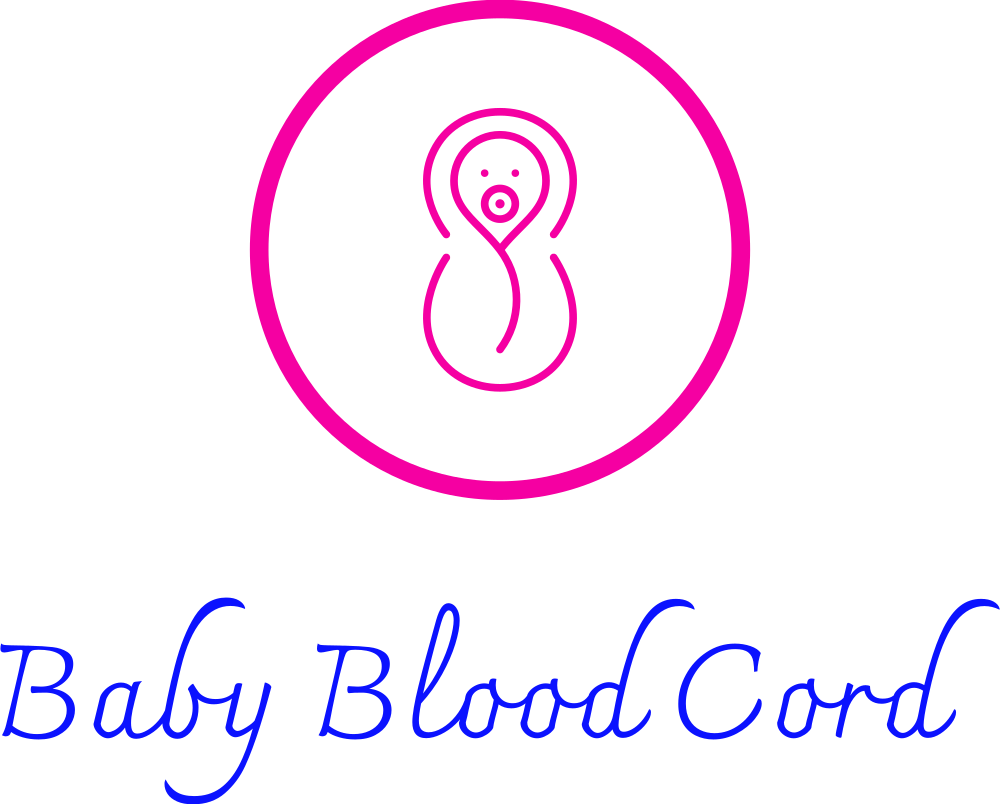Umbilical cord blood and tissue banking
Pregnancy is an exciting time that comes with a lot of anticipation and planning.
Expectant mothers want to ensure they have a healthy pregnancy and a healthy baby. One way to prepare for this is by banking umbilical cord blood and tissue.
Umbilical cord blood and tissue banking involves collecting and storing your baby’s cord blood and tissue after delivery.
This process can be a life-saving decision for your child and family.
Umbilical cord blood and tissue banking have been used for many medical treatments, including curing over 80 diseases such as leukemia, lymphoma, and sickle cell anemia.
Still, there are many other ways that cord blood and tissue banking can benefit your family. This includes the potential for future treatment of conditions such as cerebral palsy, autism, and even hearing loss.
In this blog post, we will explore the pregnancy miracle of umbilical cord blood and tissue banking.
We will discuss the benefits of cord blood and tissue banking, the collection
1. Preserve newborn’s umbilical cord.
Preserving a newborn’s umbilical cord has emerged as a revolutionary way to safeguard the future health of the child and their family.
The umbilical cord, which is typically discarded after birth, contains a rich source of stem cells that are capable of developing into various types of tissues and organs.
These stem cells can be collected and stored for future use in a process known as umbilical cord blood and tissue banking. With this cutting-edge technique, parents can secure a potential source of life-saving cells for their child and other family members in case of a future medical emergency or condition.
The preservation process is painless and non-invasive and can be completed in a matter of minutes. Overall, preserving newborn’s umbilical cord can be a valuable addition to a family’s health and wellness plan, providing peace of mind and a sense of security for years to come.
2. Why bank cord blood?
Banking cord blood is a medical process that involves collecting and preserving the blood found in the umbilical cord after a baby is born.
This blood is rich in stem cells that can be used in medical treatments to help repair and regenerate damaged tissues and organs. These stem cells have the unique ability to differentiate into a wide range of cell types, making them an invaluable resource in medical research and treatment.
By banking cord blood, parents can ensure that their child’s stem cells are preserved for potential future use in treating a range of illnesses and conditions.
This proactive approach to healthcare can provide peace of mind and may even save lives.
3. Tissue banking benefits.
Tissue banking, particularly umbilical cord blood and tissue banking, has become increasingly popular in recent years due to its numerous benefits.
Firstly, it can be a lifesaver for individuals and families who may experience life-threatening illnesses and diseases, such as leukemia, lymphoma, and sickle cell anemia. Cord blood and tissue contain stem cells that can be used for transplantation, which can potentially cure or treat these diseases.
Additionally, tissue banking can also provide a source of regenerative medicine that can help repair and regenerate damaged tissues or organs in the future. Moreover, tissue banking is a cost-effective and non-invasive method of treatment with no risk of rejection or transmission of diseases. Overall, tissue banking provides a promising opportunity for the future of medical treatments and can potentially make a pregnancy miracle for families in need.
4. Cord blood and disease treatment.
Cord blood and tissue banking is a relatively new medical procedure that has the potential to revolutionize disease treatment. Umbilical cord blood and tissue contain stem cells that can differentiate into various types of cells, including blood, bone, and muscle.
These cells have the power to regenerate and replace damaged tissues and organs, making them a valuable resource for treating a wide range of diseases. Research has shown that cord blood stem cells can be used to treat over 80 different diseases, including leukemia, lymphoma, and sickle cell anemia.
Additionally, cord tissue stem cells have been shown to have potential in treating conditions such as spinal cord injuries and heart disease. As such, cord blood and tissue banking offers a pregnancy miracle for families who want to ensure that they have a valuable resource for treating diseases that may affect them or their children in the future.
5. Cord tissue and regenerative medicine.
Cord tissue and regenerative medicine have become a popular topic of discussion in the medical community, particularly in the field of obstetrics.
This innovative approach to medicine involves the use of stem cells extracted from the umbilical cord tissue to treat a wide range of medical conditions. Stem cells have the unique ability to regenerate and repair damaged tissue, making them an ideal treatment option for conditions such as spinal cord injuries, cerebral palsy, and certain types of cancer.
By banking your baby’s cord tissue, you are providing a valuable resource for future medical treatments that may arise. With the continuous advancements in regenerative medicine, cord tissue banking has the potential to be a true pregnancy miracle, providing hope for families facing serious medical conditions.
6. Common cord blood myths.
Cord blood banking has become increasingly popular in recent years, yet there are still several myths surrounding it. In this document titled “Pregnancy miracle with umbilical cord blood and tissue banking”, we aim to dispel some of these myths and provide accurate information about cord blood banking.
One common myth is that cord blood can only be used by the baby it was collected from. In reality, cord blood can be used to treat a variety of illnesses in family members who are a match for the stem cells. Another myth is that cord blood collection is painful for the mother and baby, but in fact, it is a safe and painless procedure.
It is important to separate fact from fiction when making decisions about cord blood banking, and we hope to provide clarity on this topic.
7. Cord banking process explained.
Cord banking process is an important aspect of preserving your child’s health and well-being. It involves the storage of umbilical cord blood and tissue for future use in medical treatments and research.
The process is simple and painless and can be done immediately after delivery. Once the cord blood and tissue are collected, they are transported to a cord blood bank, where they are processed, tested, and cryopreserved.
The process ensures that the stem cells in the cord blood and tissue are preserved in a viable state for future use. The cord blood and tissue can be used to treat a variety of diseases, including leukemia, lymphoma, and other blood disorders.
It can also be used in regenerative medicine to repair damaged tissues and organs. Overall, cord banking process is a valuable investment in your child’s future health and well-being.
8. Storage options and costs.
When considering umbilical cord blood and tissue banking, one important factor to consider is storage options and costs.
There are various storage options available, such as private or public banks, as well as different types of storage, such as standard or advanced. It’s important to research and compare storage options to find the best fit for your family’s needs. Additionally, it’s important to consider the costs associated with storage, as they can vary depending on the storage option and type.
Private banks typically have higher upfront costs and ongoing storage fees, while public banks may not have any fees for storage. It’s important to weigh the benefits and costs of each option to make an informed decision.
Overall, understanding storage options and costs is a crucial component of making the best decision for your family’s future health.
9. Choosing a cord bank.
Choosing a cord blood bank is an important decision for expecting parents who want to store their newborn’s cord blood and tissue.
When selecting a cord bank, it’s essential to do thorough research and carefully consider several factors, such as the bank’s accreditation, experience, fees, and storage options.
Look for a cord blood bank with accreditations from reputable organizations, such as the AABB, FACT, or the Foundation for the Accreditation of Cellular Therapy (FACT).
These accreditations ensure that the bank meets high-quality standards for cord blood and tissue processing, testing, and storage. Additionally, consider the bank’s experience and track record in successfully collecting, processing, and storing cord blood and tissue. Check the bank’s fees and payment options, including any hidden costs or annual storage fees.
Finally, evaluate the bank’s storage options, such as the location, security, and backup systems for its storage facility.
By carefully considering these factors, expecting parents can make an informed decision and choose a reliable cord blood bank for their family’s future health needs.
10. Planning for a healthy pregnancy.
Planning for a healthy pregnancy is one of the most important steps towards ensuring a successful and safe pregnancy for both the mother and the baby.
It involves preparing both the body and the mind for the journey ahead, and making healthy lifestyle choices. This includes maintaining a balanced and nutritious diet, engaging in regular physical activity, and avoiding harmful substances such as tobacco and alcohol.
In addition, it is important to schedule regular check-ups with a healthcare provider to monitor the health of both the mother and the developing baby.
For couples hoping to take extra precautions, umbilical cord blood and tissue banking is now a viable option. By preserving the umbilical cord blood and tissue, parents can potentially safeguard their child’s future health by accessing regenerative treatments for certain illnesses and conditions.
Overall, planning for a healthy pregnancy and considering umbilical cord blood and tissue banking can provide peace of mind and set the stage for a healthy and successful pregnancy.
In conclusion, umbilical cord blood and tissue banking is a promising option for parents looking to secure their child’s future health. With the ability to preserve stem cells from the umbilical cord, families can have access to potentially life-saving treatments for a range of illnesses and conditions. Additionally, cord blood and tissue banking can offer peace of mind to expectant parents, knowing that they have taken proactive steps to safeguard their child’s health. As with any medical decision, it is important to consult with a healthcare provider and do your own research to determine if umbilical cord blood and tissue banking is right for you and your family.

